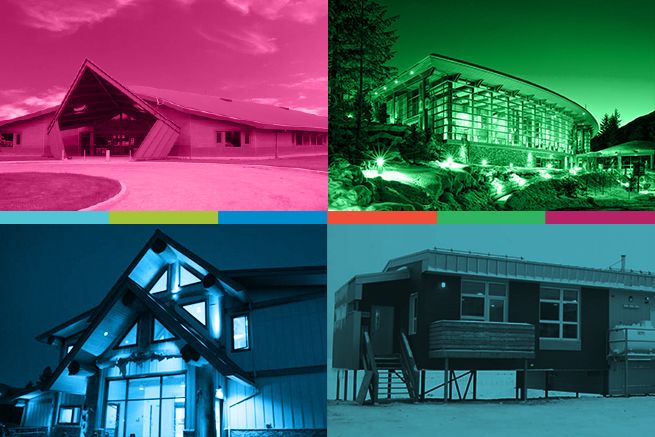
OTTAWA, July 13, 2018 – The Royal Architectural Institute of Canada (RAIC) has produced a free, public document that describes best practices in working with Indigenous communities on architectural projects.
The report titled Four Case Studies Exemplifying Best Practices in Architectural Co-design and Building with First Nations is a resource for architects, designers, clients, funders, and policy-makers involved in the creation of new infrastructure facilities and housing in First Nation, Inuit, and other Indigenous communities. It is available on the RAIC website at raic.org. Images are available here.
“The RAIC is delighted to share this original content and we hope that insights from these studies can inspire communities and help shape government funders’ policies and practices,” said RAIC President Michael Cox, FRAIC.
“The RAIC and the RAIC Indigenous Task Force believe that architecture is a public-spirited profession with an important role in reconciliation – addressing injustices by giving agency back to Indigenous people,” he said. “The case studies are also a reminder that the process of listening – and learning – from users in the shared process of design is an essential part of what we do as architects.”
Co-design is a collaborative design process between Indigenous communities and architects. In the four case studies, the vision of the community was articulated and developed through working with architects who listened. The resulting building designs were anchored in Indigenous peoples’ connection with the natural world and reflected who they are as people – their traditions, culture, values and lifestyles, and their aspirations.
The report profiles the following projects:
Building type: School
Name: Emily C. General Elementary School and IL Thomas Elementary School
Location: Six Nations of the Grand River, Ontario
Architect: Brian Porter, MRAIC
Building type: Cultural Centre
Name: Squamish Lil’Wat Cultural Centre
Location: Squamish and Lil’Wat First Nations, British Columbia
Architect: Alfred Waugh, MRAIC
Building type: Administrative and Business Centre
Name: Quilakwa Centre
Location: Splatsin te Secwepemc First Nation, British Columbia
Architect:Norman Goddard
Designer: Kevin Halchuk
Building type: Housing
Name: Pilot Nunavik Duplex
Location: Quaqtaq, Nunavik, Quebec
Architect: Alain Fournier, FIRAC
The RAIC initiated the case studies following the success of the RAIC International Indigenous Architecture and Design Symposium in Ottawa last year. After obtaining a $22,000 grant, the RAIC hired Ottawa consultant Louise Atkins to carry out the research and writing. The RAIC gratefully acknowledges the support of the Indigenous Services Canada Special Initiatives Fund.
Four Case Studies serves as an extension of the knowledge shared at the symposium by speakers from across Canada, New Zealand, Australia and the United States who presented best practices in co-design with Indigenous communities and clients. The symposium was a project of the RAIC Indigenous Task Force which seeks ways to foster and promote Indigenous design in Canada. Its membership includes Indigenous and non-Indigenous architects, designers, academics, intern architects and architectural students.
“These four reports illustrate that through a collaborative co-design approach, architects were successful in taking the visions, ideas, and preferences of their Indigenous clients, and turning them into designs that resonate with the community and are technically sound,” the report concludes. “These designs and building projects reflect Indigenous identity and become a base for cultural reclamation and growth.”
About the RAIC
The Royal Architectural Institute of Canada is the leading voice for excellence in the built environment in Canada. Representing about 5,000 members the RAIC advocates for excellence, works to demonstrate how design enhances the quality of life and promotes responsible architecture in addressing important issues of society.



